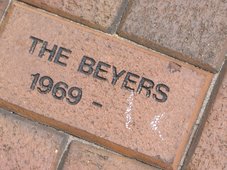Friday, May 8, 2009
GGP's Bankruptcy Case
The WSJ sets up today's bankruptcy hearing involving Columbia's developer and owner of the mall (the mall is so far not part of the case). Lots of investors who hold Commercial Mortgage-Backed Securities (CMBS)are watching closely because that's how GGP gets a lot of its money. Loans on commercial mortgages get packaged into securities and sold to investors. GGP is the nation's largest CMBS borrower, the Journal reports.
A major issue in the bankruptcy case is General Growth's request to draw cash flow from its malls and use it at the corporate level or in other areas of the company. Such transfers of money within the corporate structure used to be routine at General Growth, as they are at other similarly structured real-estate companies. But, now that General Growth is in Chapter 11, its CMBS lenders want to enforce the malls' status as separate entities and keep the malls' extra cash flow from being siphoned away to pay other creditors, namely unsecured lenders.
To prevent that, General Growth took several steps in its bankruptcy filing that might aid any argument it ultimately makes to continue drawing cash flow from the malls for corporate use, according to people familiar with the matter.
Among them, General Growth pledged to continue paying interest on its mortgages, possibly making it more difficult for CMBS holders to argue they should be allowed to foreclose. It also pledged to provide its mortgage lenders "adequate protection," meaning they will have an administrative claim in any liquidation scenario to cash flow drawn from their properties by the parent company.
A major issue in the bankruptcy case is General Growth's request to draw cash flow from its malls and use it at the corporate level or in other areas of the company. Such transfers of money within the corporate structure used to be routine at General Growth, as they are at other similarly structured real-estate companies. But, now that General Growth is in Chapter 11, its CMBS lenders want to enforce the malls' status as separate entities and keep the malls' extra cash flow from being siphoned away to pay other creditors, namely unsecured lenders.
To prevent that, General Growth took several steps in its bankruptcy filing that might aid any argument it ultimately makes to continue drawing cash flow from the malls for corporate use, according to people familiar with the matter.
Among them, General Growth pledged to continue paying interest on its mortgages, possibly making it more difficult for CMBS holders to argue they should be allowed to foreclose. It also pledged to provide its mortgage lenders "adequate protection," meaning they will have an administrative claim in any liquidation scenario to cash flow drawn from their properties by the parent company.
Subscribe to:
Post Comments (Atom)





No comments:
Post a Comment